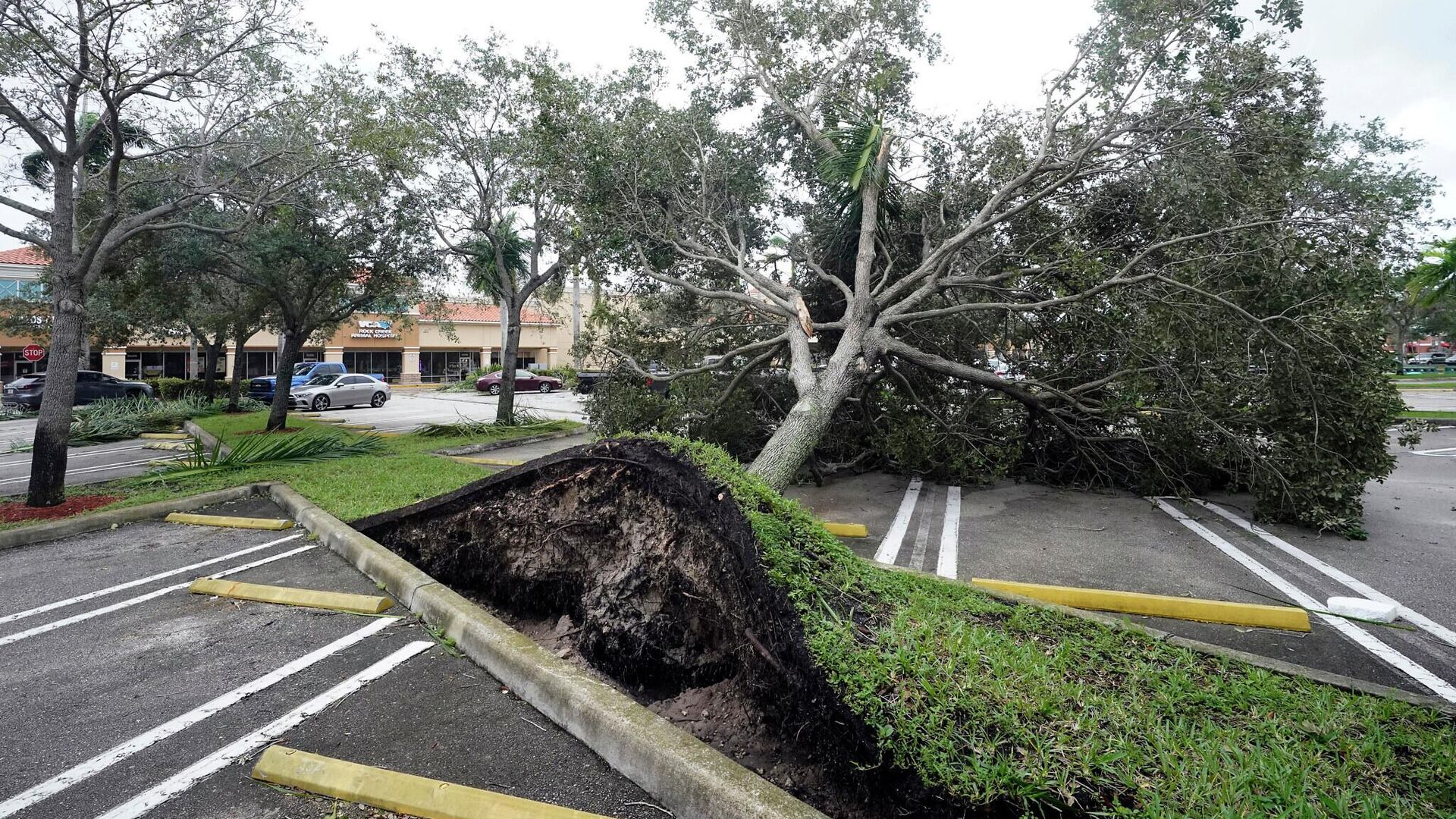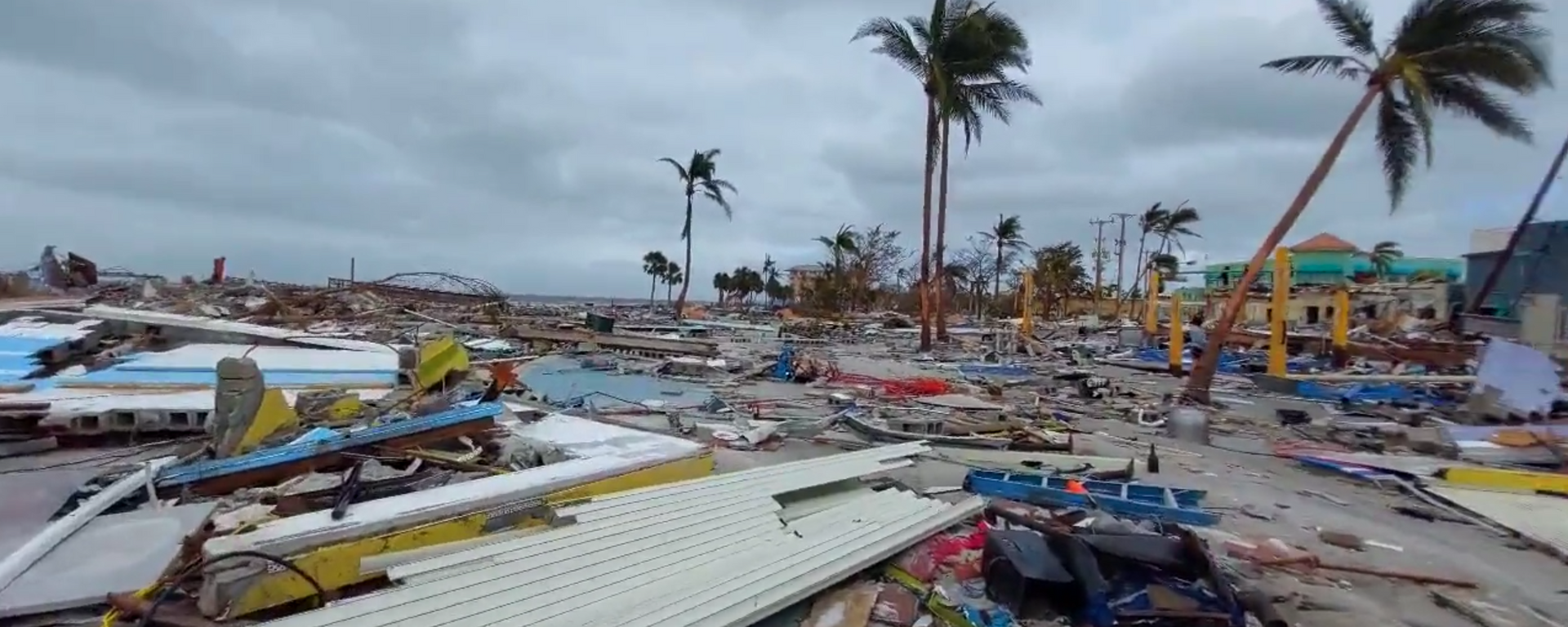Hurricane Ian: Majority of Deaths Were a Result of Drowning

© AP Photo / Wilfredo Lee
Subscribe
Hurricane Ian slammed into Florida’s coastline last Wednesday. The Category 4 storm is the second-deadliest storm to hit the United States after Hurricane Katrina, which killed 1,800 people in 2005, and is Florida’s deadliest hurricane since 1935. More than 100 people died, and at least half of those deaths took place in one Florida county.
The death toll of Hurricane Ian is still unknown but is steadily climbing. As of Tuesday, CNN reported that the storm had caused the deaths of at least 109 people in the United States, and 55 of the deaths occurred in Lee County, Florida. Four people were killed in North Carolina due to the storm.
Hurricane Ian bulldozed through the state, primarily in Southwestern Florida, and destroyed houses, broke up roads, flooded streets, and knocked out power. Rescue crews are still searching for survivors while the death toll continues to climb.
NEW VIDEO: Just absolutely heartbreaking scenes coming out of Fort Myers Beach, FL. It has been one week since Hurricane #Ian struck #Florida and the road to recovery will be a long one. #FLwx pic.twitter.com/CpwXh7GmvH
— WeatherNation (@WeatherNation) October 5, 2022
Power is still out for residents of Florida, such as in Lee County, where a majority of the storm’s recorded deaths took place. As of 9:24 PM Eastern Standard Time, Lee County had 98,260 customers without power. Charlotte County had 28,190 customers without power, and a total of 152,418 people in Florida were still without power, according to PowerOutage.us.
Horror stories of deaths have emerged from Hurricane Ian: a group of women who had rented a vacation house for their friend’s 40th birthday hid together on a mattress which was lifted by Ian’s flooding water, until the four women were pressed up against the ceiling which then proceeded to collapse, lodging a nail into the neck of a woman who’s birthday they had been celebrating, killing her.
Category 4 storms have sustained wind speeds that range from 130 to 156 miles per hour. A 71-year-old woman in Manatee County went outside her house to smoke a cigarette when a sudden gust of wind knocked her off her porch and she hit her head on a concrete step. And a 96-year-old man, the oldest victim of the storm thus far, was found trapped under his car after flooding in Charlotte County, reports The Guardian.
Nearly 90 of those who died from the storm were given a cause of death. At least 60% of those reported deaths were caused by drowning, and a majority of those were elderly.
We live on the beach in Naples, Florida. We stayed through the Hurricane Ian. Thought I'd share a rather notable photo from the experience... pic.twitter.com/LziDWoVN78
— Dixie Whatley (@bothcoasts) October 1, 2022
“I don’t want to scare people, but they need to understand: The leading cause of death is going to be drowning,” said W. Craig Fugate, the former head of the Federal Emergency Management Agency and the Florida Division of Emergency Management. “Storm surge doesn’t sound inherently deadly unless you understand it.”
But some deaths occurred even after Hurricane Ian came and went. USA TODAY reports that even after Floridians manage to get their power back, rebuild their homes and infrastructure, the lingering effects of trauma, anxiety and depression will remain. For those who already struggle with those mental health issues, the problems will worsen.
“A lot of people are feeling overwhelmed and having to rebuild and repair, in some situations, their entire lives or even just feeling shocked living without power,” Laura Guarino, a clinical manager at mental health provider SalusCare, told USA TODAY in a past interview following Hurricane Irma in 2017. “People who have mental health disorders are even more at risk because they have fewer coping skills.”
"Right after the storms, we'll often see a honeymoon phase in survivors, who say 'We're OK, we survived, everything's going to be OK, we're going to be able to rebuild, we're resilient, we're strong, we're going to come together as a community,’" Houston added. "But what we see in disaster after disaster is the reality sets in about the challenges of rebuilding or not knowing if you can rebuild or waiting to get your job back or finding a new job."
In Lee County, a 73-year-old man shot himself after he saw property damage caused by the storm. Some have estimated the amount of damage caused by Hurricane Ian to be around $55 billion. On Thursday, President Joe Biden promised that federal resources, such as disaster relief funding—which every single Florida House Republican voted against—would be available for as long as it was necessary.
“The only thing I can assure you is that the federal government will be here until it’s finished. After the television cameras have moved on, we’re still going to be here with you,” said Biden.



